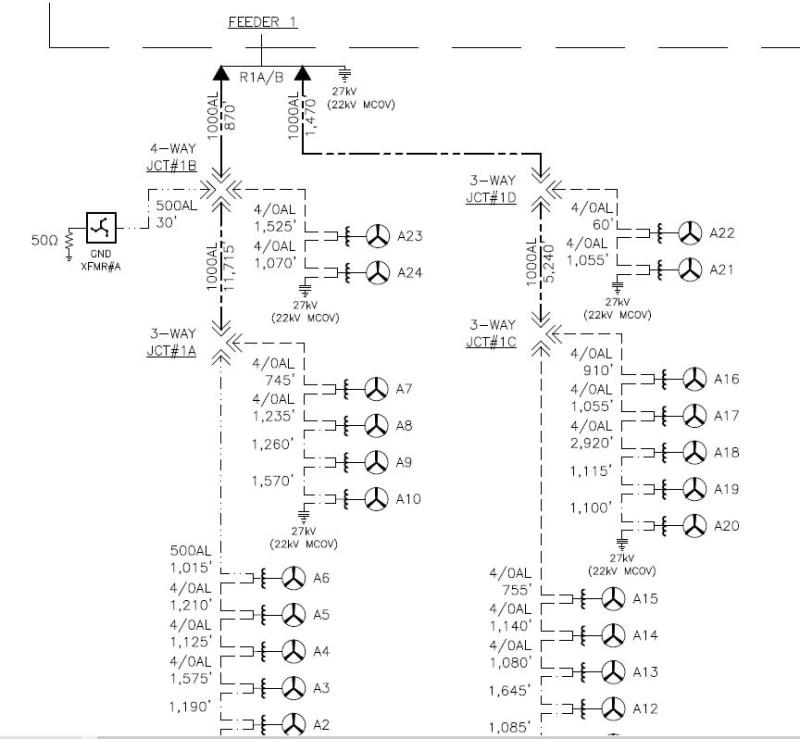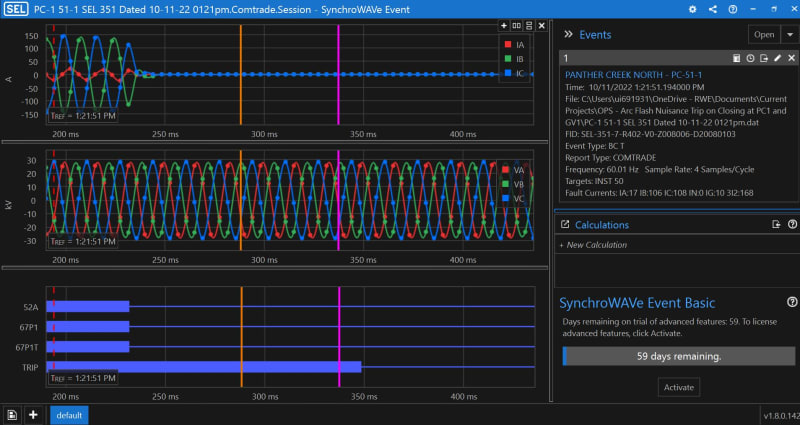Nuisance tripping issue with one of the feeder protection relays (SEL-351) and the event file shows the 67P1T protection element caused the trip. Due to certain initial energization parameters on a few circuits around the fleet and transformer inrush amps cause nuisance trips upon energization and the feeder trips quickly. 67P1T element is set to 12.00 and there is no 67P1P pick-up setting.
This is a 34.5KV feeder breaker, that is connected to appx 25 wind turbines each rated for 1.5MW, and total feeder FLA is 580A @34.5KV. Please see the attached layout. Below are the current settings.
50P1P = 0.39A
50P2P = 8.79A
67P1T = 12
51P1P = 4.4A
51PTD = 0.5
This is a Nuisance tripping for us and been there for some time. Would like to understand and look at ways to prevent the issue rather than what we are currently doing i.e. remove the 67P1T element temporarily from the trip.
Would like to understand your comments on it, appreciate the support. Thanks!!




This is a 34.5KV feeder breaker, that is connected to appx 25 wind turbines each rated for 1.5MW, and total feeder FLA is 580A @34.5KV. Please see the attached layout. Below are the current settings.
50P1P = 0.39A
50P2P = 8.79A
67P1T = 12
51P1P = 4.4A
51PTD = 0.5
This is a Nuisance tripping for us and been there for some time. Would like to understand and look at ways to prevent the issue rather than what we are currently doing i.e. remove the 67P1T element temporarily from the trip.
Would like to understand your comments on it, appreciate the support. Thanks!!




